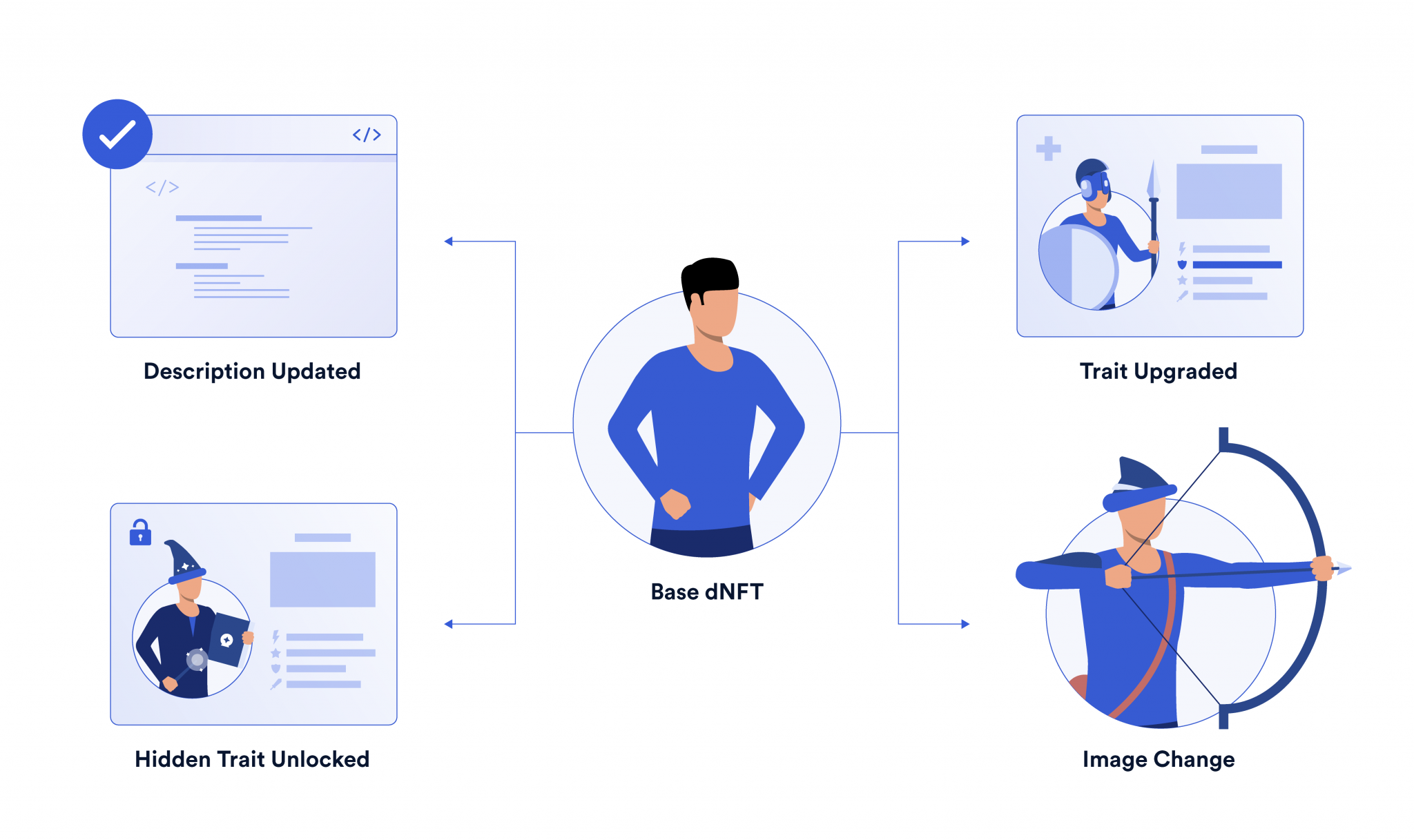What is a Dynamic NFT? dNFT Explained
Dynamic NFTs (dNFTs) can respond to internal or external signals and are certainly the future of NFT technology. Their ability to evolve based on real-life events makes them more useful and practical in a wide variety of domains.

Dynamic NFTs are possibly a very meaningful technology, but first, we must understand NFTs.
Understanding NFTs
After achieving widespread adoption throughout the Web3 community, Non-Fungible Tokens (NFTs) are making their way into the mainstream, with spotlights in major media outlets and a series of high-profile athletes and public figures launching their own collections.
As a result, NFTs have become one of the most publicly prominent applications of blockchain technology.

The next step in the evolution of NFTs is just getting started.
Dynamic NFTs (dNFTs) are expanding the design space that NFTs are able to address through their ability to adapt and change in response to external events and data.
What Are Dynamic NFTs (dNFTs)
Earn through the power of Dynamic NFTs
Cepheus is a decentralized platform that allows its users to earn both $CEPH and a diversified basket of other tokens by staking its dynamic NFT (dNFT). This new NFT primitive allows your Cepheus dNFTs to gain more use cases and a more diversified basket of token rewards the longer you hold it.
Dynamic NFTs have a fluid smart contract allowing the NFT to evolve with time in response to real-world events.
This property can be applied in different ways, allowing users to move NFTs among different blockchains and even changing their outlook upon the change of ownership.
Dynamic NFTs also have multiple use cases, from ticketing to P2E game unit exchange to real-life fantasy sports.
Besides, dynamic NFTs are expected to possess the verifiable randomness function (VRF), like in the dynamic Shield NFT available on Solsea.
ERC-1155 Standard
A dynamic NFT (dNFT) is defined by the newer ERC-1155 standard that makes it possible to alter the metadata based on external conditions.
The changing data to update a dNFT is often provided by a data oracle such as Chainlink.
In fact, Chainlink has been very active in promoting use cases for dNFTs.
Their website defines dynamic NFTs as "... perpetual smart contracts that use oracles to communicate with and react to external data and systems.”
Metadata changes are made automatically through instructions encoded into a dNFT’s smart contract that defines when and how the data should change.
This can be initiated by off-chain or on-chain events.
Put simply, a dynamic NFT is an NFT that can change based on external conditions. Change in a dynamic NFT often refers to changes in the NFT’s metadata triggered by a smart contract. This is done by encoding automatic changes within the NFT smart contract, which provides instructions to the underlying NFT regarding when and how its metadata should change.

Dynamic NFTs are certainly the future of NFT technology.
Their ability to evolve based on real-life events makes them more useful and practical in a wide variety of domains.
The authenticity of a dNFT is also enhanced as a result. It’s not hard to imagine a future where you would be able to travel freely using a dNFT as a passport that gets updated automatically as you travel to a new destination. This would not only remove the need for unnecessary paperwork and stamps but also offer a more seamless travel experience.
Similarly, dNFTs have the ability to reduce frauds and scams as the dNFT’s code is secure and ownership is clearly defined in a public ledger.
The future prospects of dNFTs are exciting and will certainly help boost the adoption of blockchain technology.
Gamers will also get an enhanced experience by owning dNFTs. Dynamic NFTs will certainly prove to be a prominent part of Web3 and the Metaverse. -Source
Dynamic NFTs In Finance
DNFTs have found use cases inside the DeFi space. Auto-staking NFTs developed by Jonathan Harrocks "CryptoBatman" allow holders to receive royalties through the Gro Bat ecosystem without sending their NFTs to a staking platform.








